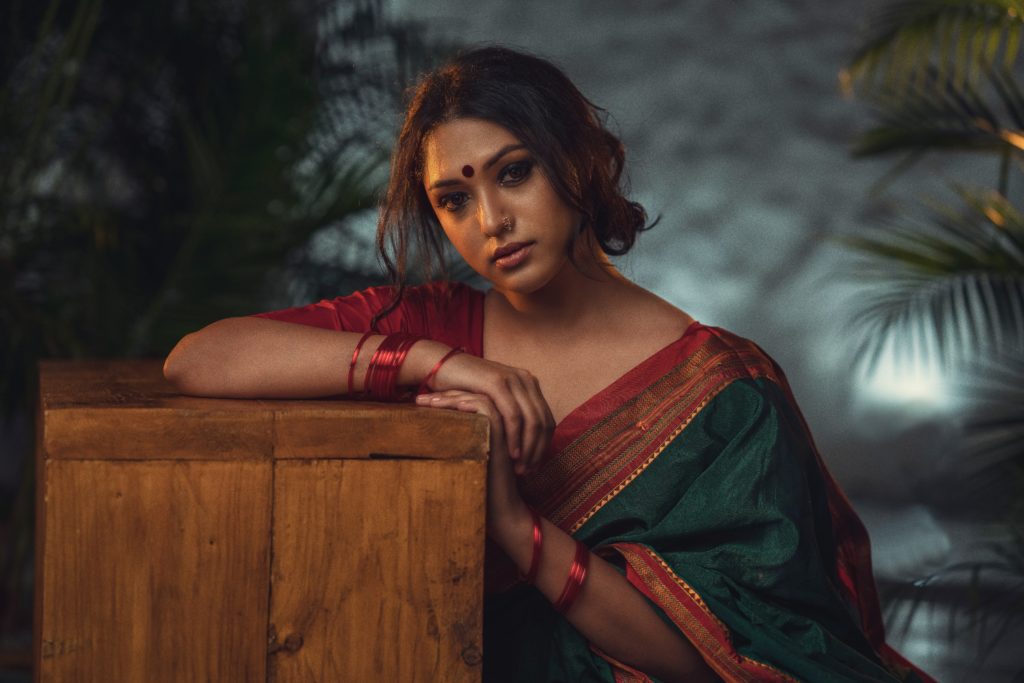Saree is one of the oldest garments and has been in existence for more than 5000 years now. In India, a saree is considered to be the quintessential clothing for women. Over time the draping styles of this clothing have changed in many ways. In modern times the saree has become an item of interesting clothing to experiment with for all fashion lovers.

A lot of interesting facts about saree are unknown to many. Here we explore some:
A Single Unstitched Fabric
A saree is incomplete with a great looking blouse today. The blouse enhances the look of the saree, making it more elegant. The saree lovers believe that the blouse you wear with your saree plays a major role in how the saree looks. Getting the right combination of colors and designs is important to look gorgeous.
Initially, sarees were made of a single unstitched fabric with borders of heavier density and ‘pallus’ with elaborate designs. But now, sarees are often made with a constant density, both mill and hand made. The 100% polyester sarees have also become trendy recently.
Hundreds Of Draping Style
The most common draping style is ‘Nivi’. The pleated saree drape is common among brides in Southern part of India. Lightweight sarees are usually draped in the float or casual style, where the pallu is left loose. Then there is the Gujarati style where the pallu is brought to the front. Bengali draping style and Maharashtrian style are another traditional one. The draping style varies state-wise and these styles have been in existence for a long time.
Draping Styles Are Still Evolving
Draping styles have changed over the years and currently, there are more than 100 ways in which you can drape a saree. Some of the modern styles are lehenga style saree draping, saree on a skirt, dhoti style and pant style draping. Another popular style is saree draping with a belt. The famous Indian designer Sabyasachi, who is known for creating some of the best sarees in the world, has popularised the style of saree draping with a belt.
Length of Saree Depends On Style
A saree can have a length ranging from 3.5 to 9 yards. Some draping styles require longer sarees while others require the shorter ones.
Saree Requires ‘Zero’ Pins
Women often put multiple pins to prevent the saree from falling off. However, if you know the right way to drape a saree you will require absolutely no pin.
Saree Is Very Easy to Wear
Modern women often consider saree to be difficult to wear. But it is one of the easiest clothing to wear and can be worn by anyone.
Blouses Or Petticoats Not Necessary
Sarees in earlier days were worn over bare breasts, without any blouse. In the Victorian age, women in Bengal wore sarees without blouses. Jnanadanandini Debi, sister-in-law of the great Rabindranath Tagore is known to have popularised blouses, jackets, and the modern draping of saree. It is said that she was once denied entry into a club under the Raj for wearing a saree without a blouse. Quite an interesting fact about saree, right!
Experimentation Started During British Rule
With time blouses became a thing of high fashion among the Indian women. Since then blouses have become a favourite and now, there are hundreds of designs available.
Boat neck blouse, High neck blouse, Halter neck blouse, Peter Pan Collar blouse, Long-sleeved blouse, Corset blouse are some of the popular blouse styles.
The high-necked blouses were quite popular during the British rule in India. Puffed sleeves were also common. Gradually the fashion lovers experimented with the sleeves, neck, and back designs bringing out some attractive styles loved by the young women of India.
Hopefully, you liked these interesting facts about saree.
